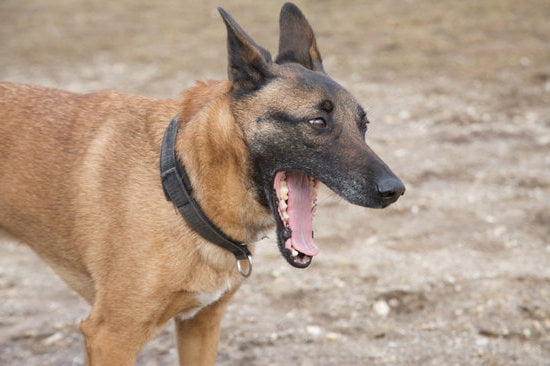Training a dog is not just about teaching them commands or tricks, but also about shaping their behavior and addressing any undesirable habits they may have. One crucial aspect of dog training is learning how to train a dog to not do something. It is essential for the well-being of both the dog and its owner to address and correct behaviors that may be harmful or simply undesirable.
Identifying the specific behavior that needs to be addressed in your dog is the first step towards successful training. Whether it’s excessive barking, jumping on people, or chewing on furniture, understanding the root cause of the behavior will help in formulating an effective training plan. This process involves keen observation and patience as you pinpoint the triggers and patterns associated with the unwanted behavior.
When it comes to training a dog to not do something, there are various methods that can be employed. From positive reinforcement techniques to correction-based approaches, each has its own set of advantages and considerations.
Finding the right method that suits your dog’s temperament and the nature of the behavior is crucial in achieving lasting results. In the following sections, we will delve deeper into these methods and provide a comprehensive guide to effectively train your dog to overcome unwanted behaviors.
Identifying the Problem
One of the fundamental steps in training your dog is pinpointing the specific behavior that needs to be addressed. Whether it’s excessive barking, jumping on guests, or digging in the yard, understanding the root cause of the behavior is crucial for successful training. By observing your dog’s actions and triggers, you can identify patterns and determine what needs to be modified.
For instance, if your dog tends to bark excessively when left alone, it could be a sign of separation anxiety or boredom. In this case, simply punishing them for barking may not address the underlying issue. Instead, you may need to consider providing mental stimulation toys or practicing desensitization techniques to help them feel more comfortable when alone. Understanding why your dog engages in certain behaviors is essential for tailoring an effective training approach.
When figuring out which behavior to focus on, prioritize those that pose safety risks or significantly impact daily life. Whether it’s aggressive tendencies towards other pets or destructive chewing on furniture, addressing these behaviors promptly can prevent accidents and improve the overall quality of life for both you and your furry companion.
Knowing how to train a dog to not do something involves first identifying what needs to be changed and then implementing appropriate strategies to modify their behavior effectively.
Positive Reinforcement vs Punishment
Positive reinforcement and punishment are two common training methods used to modify a dog’s behavior. Positive reinforcement involves rewarding your dog for exhibiting the desired behavior, while punishment entails administering consequences for undesirable actions. Many experts argue that positive reinforcement is generally more effective and humane compared to punishment when training a dog to not do something.
When considering how to train a dog to not do something using positive reinforcement, it’s essential to reward good behavior consistently. This can be done through treats, verbal praise, or toys. For instance, if you are trying to stop your dog from jumping on guests, reward them with a treat when they remain calm and greet visitors politely. By reinforcing the positive behavior, you are encouraging your dog to repeat it in the future.
In contrast, punishment techniques like scolding or physical corrections may have adverse effects on your dog’s well-being and bond with you. Studies show that punitive methods can lead to fear, anxiety, and aggression in dogs.
By focusing on positive reinforcement and redirecting unwanted behaviors towards more acceptable ones, you can effectively train your dog without causing harm or stress. It is crucial to create a safe and supportive environment for your canine companion to thrive in their training journey.
| Training Method | Effectiveness |
|---|---|
| Positive Reinforcement | Highly effective in promoting desired behaviors without negative consequences |
| Punishment | Can lead to fear and anxiety in dogs, often resulting in unintended consequences |
Setting Clear Boundaries
Training a dog to not engage in certain behaviors requires setting clear boundaries and establishing consistency in your training approach. By defining rules and consistently enforcing them, you can effectively communicate to your dog what is acceptable behavior and what is not. Here are some key strategies to help you set clear boundaries in training:
- Define the unwanted behavior: The first step in setting boundaries is identifying the specific behavior that needs to be addressed. Whether it’s jumping on guests, chewing on furniture, or barking excessively, pinpointing the problem behavior is essential.
- Consistent corrections: Once you have identified the unwanted behavior, it’s important to correct it consistently every time it occurs. This will help your dog understand that the behavior is not acceptable.
- Reward desired behaviors: In addition to correcting unwanted behaviors, make sure to reward and praise your dog when they exhibit good behavior. Positive reinforcement can reinforce the boundaries you have set.
Establishing rules and consistency in training also involves creating a structured environment for your dog to thrive in. By providing clear guidelines and reinforcing them consistently, you can help your dog understand what is expected of them.
Remember, patience and persistence are key when training a dog to not do something. It may take time for your pup to fully grasp the new boundaries and adjust their behavior accordingly. Stay committed to your training plan and remain consistent in enforcing the rules you have established. With dedication and effort, you can effectively train your dog to avoid unwanted behaviors and cultivate a harmonious relationship with your furry companion.
Ultimately, setting clear boundaries through consistent training methods can help shape your dog’s behavior positively over time. By taking the time to establish rules, provide guidance, and offer support through redirection and positive reinforcement, you can successfully train your dog to not engage in specific behaviors that may be problematic or undesirable.
Redirecting Behavior
Identifying Triggers and Replacement Behaviors
One key step in redirecting behavior is identifying the triggers that lead to the unwanted behavior in the first place. Whether it’s jumping on guests, excessive barking, or destructive chewing, understanding what prompts your dog’s actions can help you redirect them effectively. Once you have pinpointed the triggers, you can then introduce alternative behaviors that fulfill the same needs or desires in a more appropriate manner.
Positive Reinforcement Through Training
When redirecting your dog’s behavior, using positive reinforcement techniques can be highly effective. Rewarding your dog for engaging in the desired alternative behaviors helps reinforce those actions and encourages them to repeat them in the future. Whether it’s treats, praise, or playtime, positive reinforcement can go a long way in shaping your dog’s behavior positively.
Consistency and Patience
Consistency is key when teaching your dog alternative actions to replace unwanted behaviors. It’s essential to be patient and persistent in your training efforts, as learning new behaviors takes time.
By consistently reinforcing the desired actions and redirecting your dog whenever they engage in undesirable behaviors, you can help them understand what is expected of them. Remember that every dog learns at their own pace, so patience is crucial in this process of training a dog to not do something.
Creating a Training Plan
Training a dog to not engage in certain behaviors requires a well-thought-out training plan. By mapping out a step-by-step approach, dog owners can effectively address the issue and guide their furry companions towards better behavior. Here are some key steps to consider when creating a training plan:
- Identify the specific behavior: Before crafting a training plan, it’s crucial to pinpoint the exact behavior that needs to be addressed. Whether it’s excessive barking, jumping on furniture, or digging in the yard, understanding the problem behavior is the first step towards finding a solution.
- Set clear goals: Clearly define what you want your dog to do instead of the unwanted behavior. For example, if your dog tends to jump on guests, your goal might be for them to sit politely when visitors arrive. Setting these specific objectives will help focus your training efforts.
- Break it down: Once you have identified the behavior and set your goals, break down the training process into manageable steps. This could involve teaching basic commands, using desensitization techniques, or utilizing positive reinforcement methods.
Implementing a consistent and structured training plan is essential in helping your dog understand what is expected of them. With patience and persistence, along with clear communication through training techniques such as positive reinforcement and redirection strategies, you can effectively teach your furry friend how to not engage in certain behaviors. Remember that each dog is unique, so tailor your training plan to suit their individual needs for optimal results.
Consistency Is Key
Consistency is crucial when it comes to training a dog to not engage in certain behaviors. Dogs thrive on routine and structure, so it is essential to maintain regular practice and reinforcement of the desired behavior. By consistently addressing the unwanted behavior and reinforcing positive actions, you can effectively communicate with your dog what is expected of them.
One key aspect of consistency is ensuring that all members of the household are on the same page when it comes to training. Inconsistency in commands or responses can confuse your dog and hinder their progress. It’s important to have everyone involved in the training process follow the same rules and routines to avoid mixed signals. This will help create a cohesive environment for your dog to understand and comply with expectations.
Regular practice is also vital in solidifying new behaviors and habits. Just like any skill, repetition is key to mastery. Consistently practicing commands, redirects, and reinforcements will help reinforce the desired behavior over time. Remember that dogs learn through repetition, so patience and perseverance are essential in this process. With dedication and consistent effort, you can effectively train your dog to not engage in unwanted behaviors and create a harmonious relationship based on trust and understanding.
Seeking Professional Help
Recognizing the Complexity of Behaviors
Sometimes, despite our best efforts, certain behaviors in our dogs can be particularly challenging to address on our own. It is crucial to recognize when a behavior issue goes beyond our expertise as pet owners and requires professional intervention. These challenging behaviors can range from severe aggression, extreme fear or anxiety, compulsive behaviors, or any other complex issues that may be rooted in your dog’s past experiences or underlying health conditions.
When to Seek Professional Assistance
If you find that your attempts at training have not yielded any improvement or if the behavior is escalating and putting your dog or others at risk, it is time to seek help from a professional dog trainer or behaviorist. Professional trainers have the knowledge and experience to assess the situation objectively and design a customized training plan tailored to your dog’s specific needs.
They can provide expert guidance on how to train a dog to not do something while considering the underlying causes of the behavior.
The Benefits of Working With a Professional
Professional trainers can offer valuable insights into your dog’s behavior and provide you with effective strategies on how to address it. They can also teach you how to communicate more effectively with your furry companion and strengthen your bond through positive reinforcement techniques.
Additionally, working with a professional trainer gives you access to ongoing support and guidance, which can significantly increase the likelihood of success in modifying your dog’s behavior for the long term. Remember that seeking help is not a sign of weakness but rather a proactive step towards ensuring the well-being of both you and your beloved pet.
Patience and Persistence
Training a dog to not do certain behaviors can be a challenging process that requires patience and persistence. It is important to understand that changing a dog’s behavior takes time, consistency, and dedication. Each dog is unique, and what works for one may not work for another. Therefore, it is essential to approach training with an open mind and willingness to adapt techniques as needed.
One key aspect of training a dog to not engage in unwanted behaviors is to establish clear boundaries and rules. Consistency is crucial in enforcing these boundaries, as dogs thrive on routine and structure.
By setting clear expectations for your canine companion and consistently reinforcing them, you can help guide them towards more appropriate behaviors. Positive reinforcement is often more effective than punishment in shaping behavior, so be sure to praise and reward your dog when they exhibit the desired actions.
In cases where the behavior issue persists despite your best efforts, seeking professional help from a certified trainer or behaviorist may be necessary. These professionals have the expertise and experience to address more complex behavioral issues effectively.
Remember that every dog is capable of learning new behaviors with the right guidance and training approach. With patience, persistence, and proper techniques, you can successfully train your dog to not engage in unwanted behaviors and strengthen your bond with them in the process.
Frequently Asked Questions
How Do You Train a Dog to Stop Doing Things?
Training a dog to stop doing things requires consistency, patience, and positive reinforcement. Redirecting their behavior towards something more desirable, like a toy or a treat, can help them understand what is expected of them. It’s important to avoid punishment and instead focus on rewarding good behavior.
How Do You Tell a Dog to Not Do Something?
Communicating to a dog that they should not do something involves using clear commands and body language. Using a firm voice and physical cues like hand signals can help convey your message effectively. Consistency is key, as mixed signals can confuse the dog and make training less effective.
How Do You Discipline a Dog to Train?
Discipline in dog training should focus on positive reinforcement rather than punishment. Rewarding good behavior with treats or praise helps reinforce desired actions while ignoring or redirecting unwanted behavior can be effective in discouraging it. Consistent training and setting clear boundaries are essential in disciplining a dog effectively without resorting to harsh methods.

Welcome to the blog! I am a professional dog trainer and have been working with dogs for many years. In this blog, I will be discussing various topics related to dog training, including tips, tricks, and advice. I hope you find this information helpful and informative. Thanks for reading!





